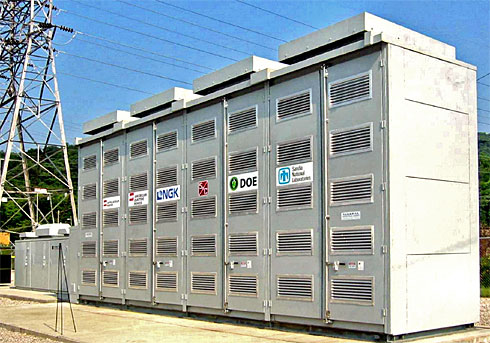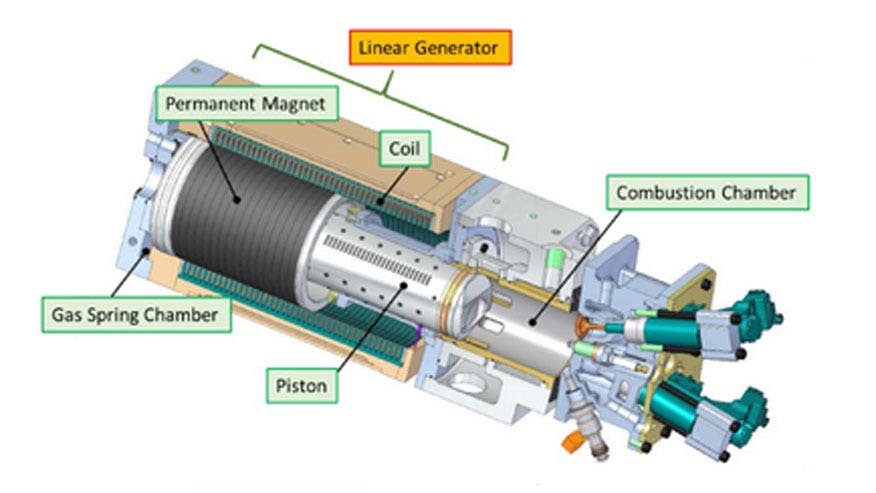
Implementation: Vehicle
Lots of buzz summer of 2009 about Electric Vehicles (EV). Nissan announced the Leaf this week. GM showed the Volt, claiming 230 mpg. Shown is a Tesla. There is substantial mystique surrounding development and deployment of electric vehicles, typified by history of General Motors' EV1. The mystique includes discussion of GM's motivation for producing the vehicle (partially, state mandates) and lack of motivation to make it commercially successful. More mystique surrounds Cobasys' NiMH proprietary battery technology. The linked article on the EV1 discusses some of this history. Although GM's cost data is proprietary and not available, it is possible to conclude that the cost of the vehicle did not lead to a commercially viable product. Nevertheless, much of the technology and processes led to development of EV1 CNG, EV1 Hybrid, and EV1 Fuel Cell prototype vehicles. The Chevrolet Volt is GM's commercial successor to the EV1. The central problem for transportation vehicles as concerns this site, is not so much the vehicles themselves. Rather, energy storage capacity in transportable form is the first factor, and distribution of energy to keep the vehicles fueled or charged is the second factor. Infrastructure for these are well-developed for gasoline; developed in specialized circumstances for vehicles using natural gas (fleets, mass transport); and are not yet well-defined for electric vehicles. Important challenges/opportunities for EVs include driving range based on battery capacity, architecture and deployment of battery charging or battery changing infrastructure, grid scheduling and capacity to facilitate charge current availability, and electricity generation capacity. (9 Jul 2010) The Energetic Performance of Vehicles, published 2008 in Open Fuels and Energy Science Journal and linked in The Oil Drum including interesting reader comments, reviews and quantitatively compares "energetic performance" and fuel transport effectiveness of various vehicles. As described in the Abstract, "Vehicles with the highest level of energetic performance have efficient power plants, high payload to gross mass ratios, or reduced friction with the surrounding environment". Examples of vehicles with highest energetic performance include oil tankers, pipelines, trains for passengers, freight, and coal, and high-capacity aircraft. Mid-performance vehicles include bicycles, inter-city passenger trains, and average-size aircraft. Automobiles, whether hybrid (Prius, Civic) or EV (Tesla), Amtrak, and urban buses fall in the mid-range to lowest-energetic performance. The Escalade is, unsurprisingly, shown as the lowest-energetic-performance vehicle in the study. Here's a paper from Australia, about EVs. In short,
Sources quoted in this article think broad EV adoption is five to ten years out (from 2009). However, a report from the National Academies is far more pessimistic. Based on manufacturing cost, largely driven by batteries, the study concludes that operational savings will not offset upfront costs even if a mile driven on batteries costs less than a mile on gasoline. Furthermore, PHEVs will not significantly reduce oil consumption before 2030 when 40-50M vehicles could be in use limited by cost, plug-in availability, and competition with hybrids. PHEV emissions are not less than hybrids when emissions from electricity generation are included (unless broad adoption of carbon sequestration from coal, or nuclear generation occurs). Subsidies from tens to hundreds of billions of dollars would be required for these transitions. Battery range is key to EVs, with range of 100 miles per charge common in 2009. Battery technologies include NiMH (Cobasys), and Lithium Ion batteries. Several lithium configurations are being explored, including lithium-cobalt and lithium-air (lithium-oxygen). These batteries hold substantial charge, so work is ongoing on safety since a large amount of energy may be released catastrophically in a crash. Battery charge is a major component of range, and methods include regular and fast charge, and quick-change. Battery charge solutions are expected soonest, battery exchange systems later. Currently, Li batteries with 100-mile range require 6-8 hours to charge. Quick-charge systems are expected to fully re-charge in 30 minutes. Standards need to be developed throughout this system. Nearly all vehicle manufacturers are currently focused on charge systems. Warren Buffet has invested in BYD Auto Co., Ltd. in China. Most of the Chinese market, though, is focused on low-cost, low-speed lead-acid battery vehicles. 
Current production vehicles use internal combustion engines converted for use in a hybrid power plant, but not optimized for it. A technology called Free Piston Linear Generation provides an engine optimized for use charging a battery, and will allow use of smaller batteries. The illustrated system from Toyota is an example of such an engine. These engines are multi-fuel, and software replaces mechanical components reducing wear. Intake valves are passive, simplifying engine control. In the Pempek Systems FP3, an integrated linear generator produces up to 450kW. What would be the remedy if your car charge is depleted at a site without a suitable plug, of if there weren't enough plug-ins at a site when you arrived? Project Better Place, a California company, is planning 50 battery exchange stations in Israel by the end of 2010 and are demonstrating a battery exchange facility in Yokohama. Renault is developing a vehicle to use such a battery exchange system. Better Place is also planning 100,000 plug-in stations in Israel by the end of 2010. Youtube video of Shai Agassi, CEO of Better Place, on Mass Adoption of Electric Cars. You can find several more Better Place videos on Youtube. Batteries for any EV system are a substantial part of the cost of a vehicle, and it is possible that they would be financed separately from the vehicles themselves. Survey article on electric vehicles as of early 2010. The position of this site is that battery exchange, and infrastructure supporting it, will develop in the longer term to broad deployment. This will be due to charge-time and required range driven by in-place civilization. This will mimic the infrastructure supporting 2009 gasoline vehicles and will create industry to charge and distribute batteries, infrastructure to provide "refueling" battery exchange stations and equipment (probably an extension of existing gas service stations); standards-based interchangeable batteries; and financial companies that will own and lease batteries, possibly controlling charging and distribution networks. These structures will roll out in archipelagoes. This will occur as the end-to-end cost of energy-generation - charge - distribution - EV cost per mile approaches that of gasoline-hybrid vehicles. This economic parity will be required for consumers to virally adopt this as a new equilibrium point for transportation, and will trump any government-imposed mandates which are likely to drive toward non-optimum equilibria. An issue for EVs is that they push the power generation problem back to the utility that charges the battery. So the utility power cost drives the EV operating cost; and although the vehicle is emission-free, the utility is not. In the US, the majority of electric power on the grid is coal-powered so it isn't quite right to think of EVs as emission-free. Also, in the present environment, utilities and their fuel suppliers may become subject to cap-and-trade, which would increase the cost of electricity and therefore cost of EV operation so comparisons of current cost are probably not a good predictor. Toyota addresses these issues in this paper. Toyota's strategy is based on hybrid vehicles which may include a gasoline engine or a fuel cell. Toyota claims that hybrid vehicles provide the greatest well-to-wheel efficiency. This site believes a winning combination for vehicles in the foreseeable future will be the compressed natural gas hybrid, supported by CNG service extension within the existing service-station infrastructure. Because of infrastructure limitations in the short term, this will be concentrated in fleets, transport (trucking), and mass transport, for which centralized fuel infrastructure is practical. Here's an example of such a vehicle.
Natural gas is carried under pressure, which brings with it some important limitations. It is carried in tanks that must be able to withstand pressure, so they are thick-walled and require substantial space. There are restrictions on carrying compressed gas through bridges and tunnels. The Chesapeake Bay Bridge-Tunnel, for example, restricts LPG used as motor fuel to 200 gallons. Obviously, plenty for automobiles; but not so much for tankers or bulk transport supplying distribution points. Infrastructure does not exist broadly for natural gas distribution. Gasoline hybrid automobiles will see increasingly broad use, with natural gas vehicles concentrated in fleets, transport (trucks), and mass transit for which centralized fuel distribution is practical. Natural gas distribution end-points will be a pacing item for deployment of NGVs. For this reason, fleets, either truck or automobile, that can be concentrated to use proprietary NG stations, are the most likely to deploy broadly. The Natural Gas NGV Fleet Summit offers a number of papers on their Resources page. Clean Energy Fuels Fuels (CLNE) are a company developing NG distribution points. Natural gas is a compromise, it is an emitter of CO2 and it is not renewable. But renewables are not today sufficiently exothermic, and depend on non-renewable energy for manufacture etc. and so will be net emitters of CO2 for some time as that is improved. Fuel Cells are being investigated for automotive use, as shown in a report from Honda. Analysis on the Primary Sources and Energy Economics pages on this site indicates that as world economies grow and also due to other enumerated causes, substantial pressure will result to availability and cost of petroleum. Petroleum usage is heavily focused toward transportation, so this will primarily motivate evolution of the transportation system through natural economics. That evolution will include increased use of gasoline hybrid vehicles at first, natural gas vehicles, and ultimately use of EVs as their source-to-use cost per mile competes with gasoline hybrid vehicles. These factors will lead to development of the infrastructures outlined in the blue editorial boxes above. Summary of transport fuel migration factors. Implementation: UtilityEnergy Storage in Transmission and Distribution Applications AEP has placed battery systems at strategic points in their distribution system. This has been used successfully in "Dynamic Islanding" to manage service outages, and has demonstrated three years of successful Peak Shaving. They document net 90% efficiency for an energy value exchange of $70K in 2006. They conclude that today, battery storage is more expensive than conventional solutions but is "a premium [they] will gladly pay to ensure their business a better future". EPRI has published a paper with a detailed survey of utility power storage. Energy Storage Technology Overview
Specific Technologies
Companies
|
